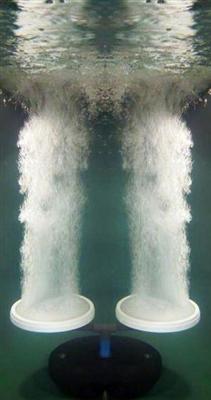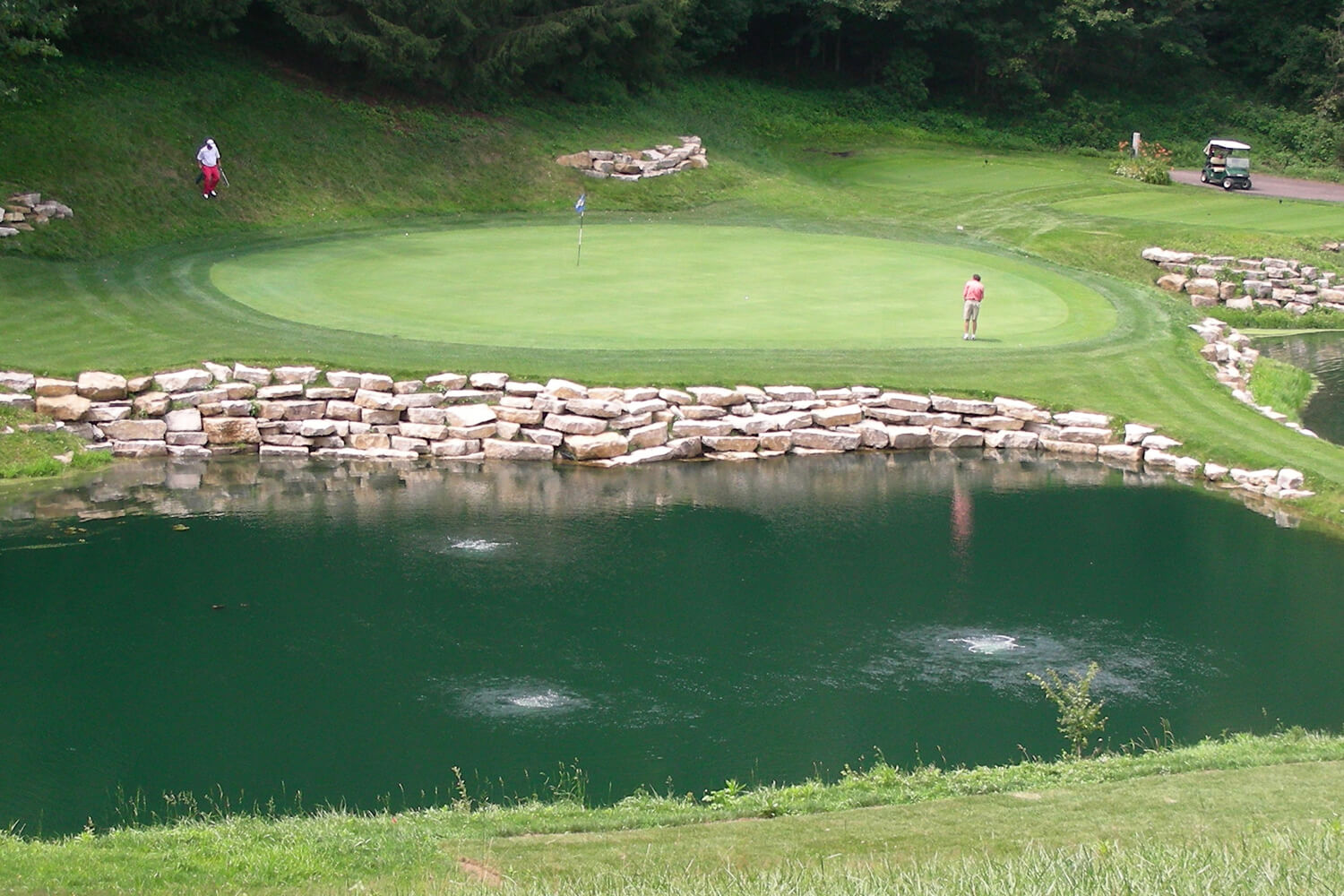What is a Diffused Aeration System?
A diffused aeration system utilizes an air compressor that pumps air into the bottom of a pond to circulate the water. The bubbles mix the water in the pond as they rise to the surface. It is important to mix the water because, in warm summer months, pond water becomes stratified. Meanwhile, in the winter months, a diffused aerator can regulate pond temperature and prevent ice formation.
How Diffuser Systems Work
Stratification occurs when the water on the surface of the pond is warmed by the sun and does not mix with the cooler water on the bottom. The two layers of water do not mix because they have different densities. The warmer layer on the surface contains oxygen but the colder layer on the bottom does not. Therefore, the nutrients and sediment that accumulate on the bottom of the pond cannot break down because oxygen is not present.
However, mixing the pond water with a diffused aeration system provides uniform oxygen from the surface water to the bottom of the pond. Adding oxygen to the bottom of the pond allows the nutrients and sediment to break down more efficiently, therefore reducing the nuisance of plant growth.
2 Things to Consider When Selecting a Diffuser
1. Air Compressors – Volume of Air
There are two types of air compressors that lead the industry in diffused aeration.
- Rotary Vane Compressors – These compressors utilize spinning carbon vanes to build air pressure. They create a constant supply of air for depths up to 15 feet. Rotary vane compressors have been used in pond aeration for over 30 years and have a great reputation for reliability and longevity.
- Rocking Piston Air Compressors – These compressors utilize two pistons fitted with a cup to create air pressure. Unlike the rotary vane compressor, the rocking piston compressor can supply air to depths greater than 15 feet. The rocking piston compressor is a newer technology that has proven its worth.
The volume of air created by either type of air compressor determines how well a pond can be mixed. Air volume supplied from a compressor is measured in terms of Cubic Feet per Minute or CFM. Rotary vane compressors put out higher CFM’s per horsepower than rocking piston compressors but rocking piston compressors operate at a higher pressure. Therefore, rocking piston compressors can be used at greater depths.
Contact our team to find out which compressor is suitable for your pond aeration system.
2. Aeration Systems – Size of Air Bubbles
To de-stratify a waterbody, the size of the air bubbles is an important consideration. Air can be introduced into a waterbody through various types of diffuser mechanisms or manifolds which create bubbles. As the bubbles rise, they lift the contents of the pond and mix the pond water. This process is called a synergistic lift. To maximize synergistic lift, it is important for the air manifold in the bottom of the pond to create many small bubbles.
- Ceramic Stone air manifolds create the best synergistic lift and are the most reliable. At AEC, we prefer to install diffused aeration air manifolds that utilize ceramic stones.
- Electric based diffused aeration systems are the most consistent way to mix the water in a pond or lake.
- Solar-powered diffused aeration systems can be used in smaller ponds. The initial cost is much higher than a conventional electric diffused aeration system, however, there is no electrical cost to run a solar-powered system. The main drawback is that the amount of power is limited by the intensity of the sun. For the Mid-Atlantic states we serve, solar-powered diffused aerators are not usually the best option.
- Wind powered diffused aeration systems use a windmill to generate the power needed to pump air into the pond. These systems can be useful to provide aeration in ponds that are remotely located. However, wind-powered systems are not reliable when there is a lack of wind.
The Aquatic Environment Consultants experts have many years of experience in helping customers choose the appropriate diffuser system for each distinct waterbody. Contact our team today to learn more about which system is best for your body of water.




Add Comment